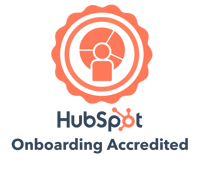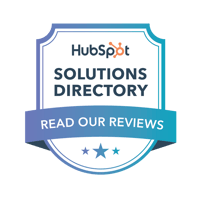Whether you're a small business or a massive multinational corporation, one thing is the same: email marketing should be a critical part of your digital marketing strategy. For every $1 you spent on email marketing, organizations see an average return of $21-40. That's an almost unbelievable margin.
But creating a killer email isn't as simple as pressing "send." First, you have to write it. And that prospect is daunting.
If you're struggling with ideas, explore our curated list of creative email topics. These ideas are designed to jumpstart your creative process.
Related Content: 10 Steps for Better Marketing Emails
20 Creative Marketing Email Ideas...
...to send to new subscribers
1. Welcome email
Thank them for joining your list and give them a preview of what to expect - how often do you send marketing emails? What type of content will you be sending? Can subscribers customize the information they receive?
2. Meet the team email
Introduce your subscribers to your team. Give a quick bio of each key employee. If you have data about your subscriber, you can further customize: for example, if the subscriber is a prospect then you may want to lead with their sales rep.
3. Popular resources
New subscribers may be a mix of prospects, current customers, partners and employees. You can create a curated list of helpful resources for each of these audiences, and then use smart content to display the relevant information to each subscriber.
4. Onboarding checklist
For new subscribers who are also new customers, an onboarding checklist can be extremely helpful. Include a list of actions they can take to get the most out of your product or service.
5. Community spotlight
Let new subscribers know how you get involved in your community so they can learn more about your organization's values. This can be as specific as charity events, or a more general round-up of non-profits that your organization supports.
...to send to prospects
1. Real stories from real customers
2. Useful resources
3. Event invite
4. Custom discount
5. Demo video or invite
...to send to current customers
1. Provide a “how-to” tutorial
Help your customers get the most out of your product or service with guides. A simple how to guide can go a long way in customer satisfaction.
2. Underused features/hacks
Share some of your pro tips with your customers on how to get the most out of your product or service. Look for some underused features or insider hacks that your team uses. If you're a service-based organization, you can provide a list of tools for your clients.
3. Ask for feedback/advice
Your current clients can be a huge resource for internal improvement. They can help shine a light on areas of friction that you aren't aware of. Solicit your customers' feedback via a survey, a review or even just a simple reply back.
4. Send a thank-you note
Taking the time to thank your current customers helps nurture your ongoing relationship. Make these personal, not generic. You can send these on customer anniversaries, at the end of the year or during contract renewal.
5. Shout out milestones
Call out customer wins not just to that customer, but to your entire base. Shout out anniversary dates, creative usage, major wins and other victories.
...to send to employees
1. Respond to industry trends or news
Keep employees engaged and showcase your thought leadership by responding to what's going on in your industry. What should employees be aware of? What are some ways your organization are responding to new trends?
2. Anniversaries and birthdays
It can be hard for employees to keep track of others milestones. A dedicated monthly or quarterly email that includes all upcoming employee anniversaries and birthdays helps employees remember these key dates.
3. Feedback & results
Your employees can provide incredible insight as to the health of your organization. Send out surveys, and then follow-up with an email highlight results. What are some of the common responses? What are some actions you can take?
4. Share hacks/tools
Ask your employees to share hacks, tips and other cool stuff they're using to make their jobs easier. Then, gather it all in a mass email. This is a great way to provide some value to your employees.
5. Quarterly focus
Share your quarterly focus, but make it a bit more personal. Give context around current priorities and how every team contributes.
These ideas will help you get started with drafting your emails. But the topic is only one piece of the puzzle.
Get Strategic with Your Email Marketing
Now that you have some ideas of what to write about, focus on the how. Blasting a message into a massive void of contacts isn't likely to get you much return. (And please, Don't buy that list. )
For best results, you should use segmentation to organize your lists. Group contacts by some similar trait - common options include lifecycle stage (e.g., are they a client, a prospect, or a vendor), geographical location, service type, and/or industry. You can then send your emails only to the segments likely to be interested. This makes it more likely that your emails will get opened. It also prevents readers from unsubscribing and missing out on potentially relevant information because they're sick of getting messages that aren't useful to them.
Additionally, personalization can increase your open rates. Include relevant and personal details in emails - the simplest (and most common) example is starting an email with the recipient's name and/or company. Or it can be as complex as pulling in client information - such as last purchase date, specific need from your last chat, or a reminder to make an appointment.
Related Content: The Non-Marketer's Guide to Segmentation & Targeting
If you truly want the best return from your email, you need to get strategic with the tools you use.
Free Guide: Beginner's Guide to Digital Marketing
This in-depth covers everything you need to know to get started with effective digital marketing
What exactly digital marketing is and how it works.
Explore a step-by-step process for running an digital marketing campaign in today’s competitive business landscape.
Best practices for your digital marketing strategy
We walk through how to implement a strategy using digital marketing, email, SEO, social media and online advertising.
How to measure the impact and ROI of your strategy
Make insights-driven business decisions and confidently present the value and impact of marketing efforts in support of top-level business objectives.
BizzyWeb is a Minneapolis-based digital marketing and web design agency that helps companies get the high-quality leads they need to grow and thrive. Our tactics include inbound marketing, SEO, advertising, web design, content creation and sales automation. We are an accredited HubSpot Diamond Partner and we offer full-service HubSpot onboarding, enablement and strategy for new and current users.






